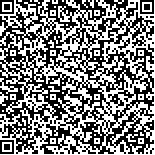| 引用本文: | 唐文强,高艳蓉,杨长花,刘斌,王艳娇,刘峰.经典名方泽泻汤UPLC指纹图谱的建立[J].中国现代应用药学,2021,38(6):680-687. |
| TANG Wenqiang,GAO Yanrong,YANG Changhua,LIU Bin,WANG Yanjiao,LIU Feng.Establishment of UPLC Fingerprint of Zexie Decoction Which is a Classical Herbal Formula[J].Chin J Mod Appl Pharm(中国现代应用药学),2021,38(6):680-687. |
|
| |
|
|
| 本文已被:浏览 9565次 下载 4682次 |

码上扫一扫! |
|
|
| 经典名方泽泻汤UPLC指纹图谱的建立 |
|
唐文强,高艳蓉,杨长花,刘斌,王艳娇,刘峰
|
|
1.陕西国际商贸学院, 西安 712046;2.陕西省中药绿色制造技术协同创新中心, 西安 712046;3.陕西步长制药有限责任公司, 西安 710075
|
|
| 摘要: |
| 目的 建立泽泻汤的UPLC指纹图谱。方法 采用ACQUITYUPLCÒBEH C18色谱柱(2.1 mm×50 mm,1.7 μm),以乙腈(A)-水(B)作为流动相进行梯度洗脱,柱温35℃,流速0.3 mL·min-1,全波长扫描,以泽泻醇B为参照峰,分析15批次泽泻汤的UPLC指纹图谱,并使用中药色谱指纹图谱相似度评价系统结合主成分分析、正交偏最小二乘法判别分析(PLS-DA)评价泽泻汤的指纹图谱。结果 在泽泻汤指纹图谱中共标定23个共有峰,其中15个化合物峰来自泽泻,8个化合物峰来自白术,指认了白术内酯Ⅰ、白术内酯Ⅱ、白术内酯Ⅲ、泽泻醇A、泽泻醇B和23-乙酰泽泻醇B 6个共有峰,其含量波动范围分别为0.028 7~0.033 1,0.029 5~0.036 6,0.012 0~0.019 4,0.102 2~0.143 9,0.469 3~0.701 2,0.425 5~0.730 8 mg·mL-1,15批样品指纹图谱相似度为0.979~0.996。主成分分析和PLS-DA将15批样品按照泽泻的产地不同分为3类。结论 该方法快速简单、精密度高、稳定性强、重复性好,基本体现了泽泻汤的整体化学成分特征,可为泽泻汤开发和应用的质量控制提供参考。 |
| 关键词: 泽泻汤 超高效液相色谱 指纹图谱 主成分分析 |
| DOI:10.13748/j.cnki.issn1007-7693.2021.06.008 |
| 分类号:R284.2 |
| 基金项目:陕西省高校科协青年人才托举计划项目(20180312);生物医药创新制药技术研究院士专家工作站资助项目(陕科协发[2017]事企字15号);陕西省创新能力支撑计划项目(2018PT-07);陕西高校青年科技创新团队(陕教[2019]90号);陕西国际商贸学院科技创新团队建设项目(SSY18TD02) |
|
| Establishment of UPLC Fingerprint of Zexie Decoction Which is a Classical Herbal Formula |
|
TANG Wenqiang1,2,3, GAO Yanrong1,2,3, YANG Changhua1,2,3, LIU Bin1,2,3, WANG Yanjiao1,2,3, LIU Feng3,4
|
|
1.Shaanxi Institute of International Trade &2.Commerce, Xi'an 712046, China;3.Collaborative Innovation Center of Green Manufacturing Technology for Traditional Chinese Medicine in Shaanxi Province, Xi'an 712046, China;4.Shaanxi Buchang Pharmaceutical Co., Ltd., Xi'an 710075, China
|
| Abstract: |
| OBJECTIVE To establish the chromatographic fingerprint of Zexie decoction by UPLC. METHODS The fingerprint was determined on ACQUITYUPLCÒBEH C18 column(2.1 mm×50 mm, 1.7 μm), with acetonitrile(A)-water(B) as mobile phase for gradient elution at a flow rate of 0.3 mL·min-1. The temperature of column was 35℃. Full wavelength scanning was employed and alisma B was chosen as the reference peak. The UPLC fingerprints of 15 batches of Zexie decoction were studied and the similarity was analyzed with Similarity Evaluation System for Chromatographic Fingerprint of Traditional Chinese Medicine combined with principal component analysis and discriminant analysis of orthogonal partial least squares(PLS-DA). RESULTS There were 23 common peaks in the UPLC fingerprints of Zexie decoction. Among of them, 15 common peaks were assigned to Alismatis Rhizoma, 8 common peaks belong to Atractylodis macrocephalae Rhizoma. Atractylenolide I, atractylenolide Ⅱ, atractylenolide Ⅲ, alisol A, alisol B, alisol B monoacetate were determined by the relative time of the standard substance and the contents of these compounds were in range of 0.028 7-0.033 1, 0.029 5-0.036 6, 0.012 0-0.019 4, 0.102 2-0.143 9, 0.469 3-0.701 2, 0.425 5-0.730 8 mg·mL-1 in 15 batches of Zexie decoction. The similarities of batches were 0.979-0.996. In principal component analysis and PLS-DA, 15 batches of samples were divided into 3 groups according to Alismatis Rhizoma that come from different provinces. CONCLUSION The established method is quick, easy, accurate, stable and repeatable, which can basically reflect the overall chemical composition characteristics of Zexie decoction and provide a reference to the exploitation and application of Zexie decoction. |
| Key words: Zexie decoction UPLC fingerprint principal components analysis |
|
|
|
|
